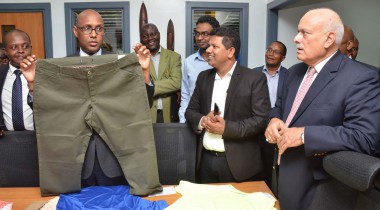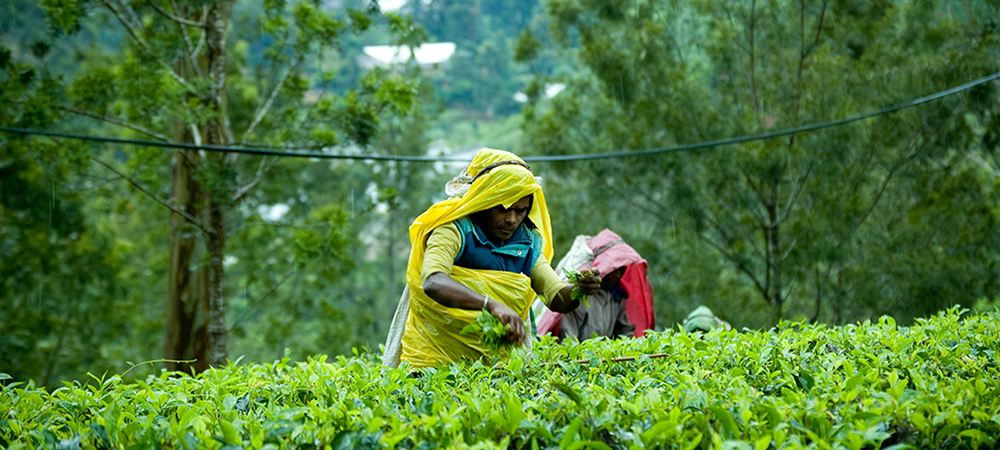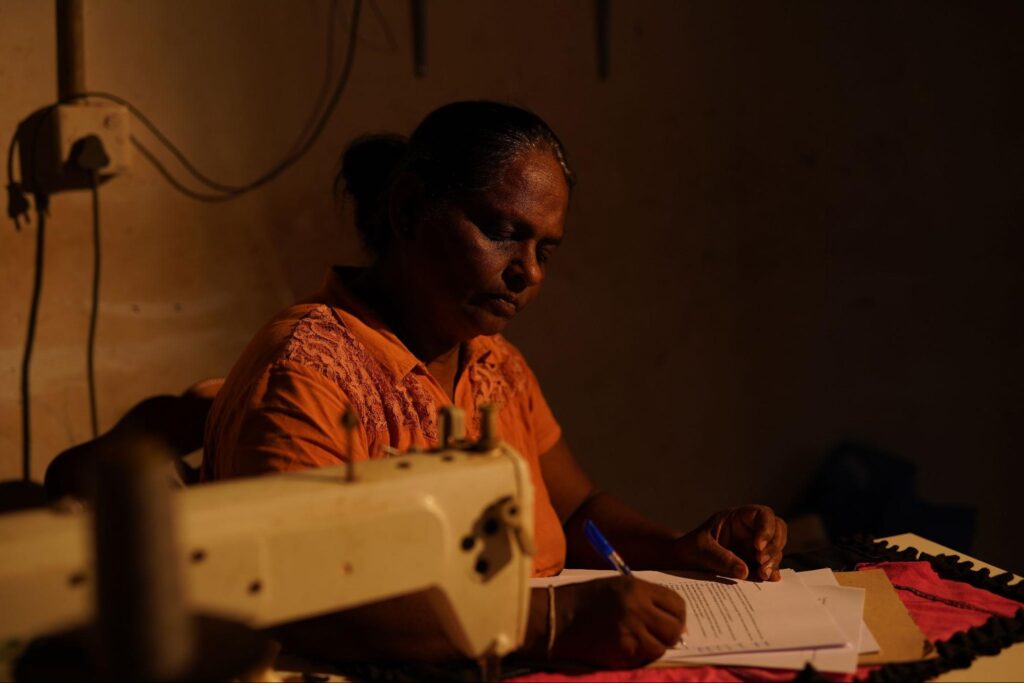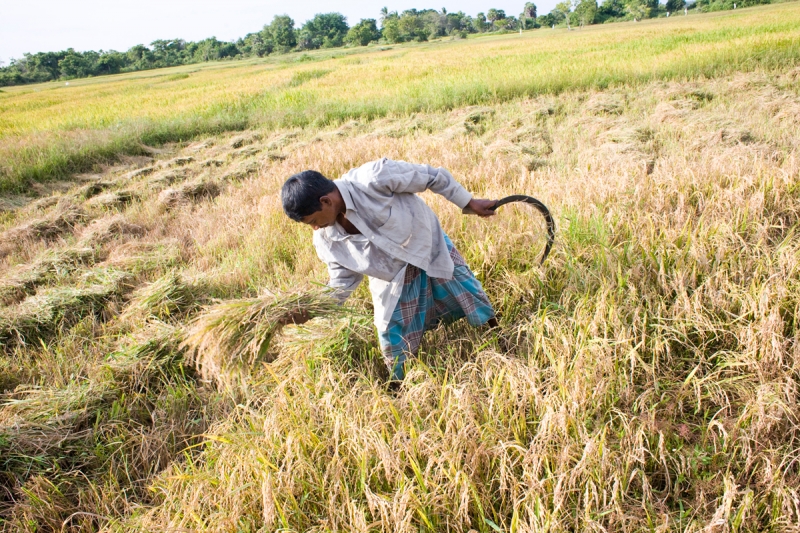
A country’s labour force is perhaps its most valuable resource. A large, productive workforce, when combined with other inputs, can increase an economy’s production capacity, thereby making it possible to produce more goods and services. These outputs, in turn, enable a country to participate in trade, bring in money, and ultimately drive an increase in living standards.

Women working on a farm in India. Image credit: India Spend
But, what if we told you that Sri Lanka is failing to properly utilise one half of its workforce?
Indeed, the data says so. According to the World Bank (which focuses on eradicating poverty, if you didn’t know already), Sri Lanka’s Female Labour Force Participation Rate (LFPR) lies at around 35%, which is a paltry figure when compared to other nations.
Now compare that to the Female LFPR of countries around the world.
First, let’s back up a few steps, and talk about what LFPR really means. The way the World Bank, and the International Labour Organisation see it, LFPR is the “proportion of the population ages 15 and older that is economically active: all people who supply labour for the production of goods and services during a specified period.” Obviously, it can be split along gender lines. It is also the standard statistic by which labour force participation is compared across countries.
Look at that second graphic again. Notice how all the ‘rich’ countries have relatively higher female LFPRs than their poorer counterparts?

Women working in a shell factory during World War 1. Image credit: The Imperial War Museum
Is this a coincidence? No. In fact, it is simple logic. Let us explain:
Imagine two farmers, each owning an acre of land. One guy cultivates every inch of his land, while the other leaves half of his land fallow, year after year. Which of these two farmers will grow rich?
The answer is obvious, really: the farmer who uses all of his land will be better off. And what’s going to happen to the other guy? Well, he’s going to remain poor, relatively speaking. Now, how does this relate to a country’s workforce, and women?
We’re going to allow Bill Gates to explain that to you, as he once did at Davos.

Bill Gates at the World Economic Forum in Davos (2016). Image credit: BBC
“Bill Gates recalls once being invited to speak in Saudi Arabia and finding himself facing a segregated audience. Four-fifths of the listeners were men, on the left. The remaining one-fifth were women, all covered in black cloaks and veils, on the right. A partition separated the two groups. Toward the end, in the question-and-answer session, a member of the audience noted that Saudi Arabia aimed to be one of the Top 10 countries in the world in technology by 2010 and asked if that was realistic. ‘Well, if you’re not fully utilizing half the talent in the country,’ Gates said, ‘you’re not going to get too close to the Top 10.’ The small group on the right erupted in wild cheering.”
-Source: The New York Times Magazine, The Women’s Crusade, August 17,2009.
Like it or not, Gates was right. And the point he made about fully utilising the available talent in a country is one which Sri Lanka needs to take to heart.
Why Is Sri Lanka’s Female LFPR So Low?
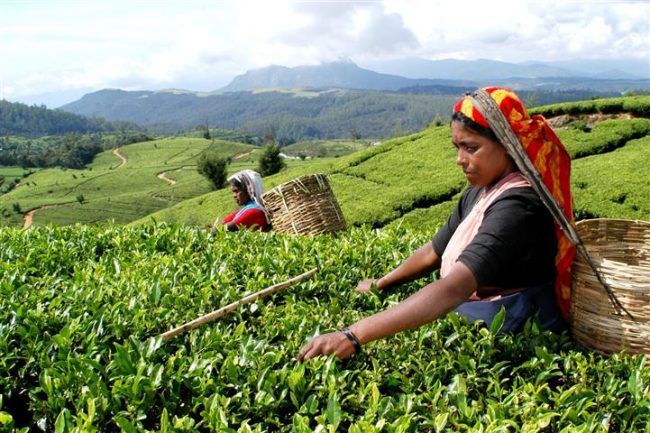
Tea pluckers in Sri Lanka. Image credit: danarif.com
The Central Bank of Sri Lanka has addressed this issue in its 2014 Annual Report (the latest available at the time of writing). Here are the reasons, as set out in the report.
“There are several key reasons why many females chose to leave the labour force or it is difficult for them to be employed. Being involved in household responsibilities, particularly child care, unavailability of safe accommodation and transportation facilities to and from work, difficulties in adhering to work time slots and inability to find employment after a break, can be identified as major reasons for low female labour force participation in Sri Lanka. Also, there is a social norm in the country that women are to take up household responsibilities, while men are engaged in earning. This traditional perception hinders the opportunities for women to attain economic freedom.”
What Will Happen If We Don’t Do Anything About This?
Again, the Central Bank has the answers to this question, and is very much aware of the impact a declining Female LFPR can have on the country’s economic growth.
Here’s what it has to say:
“It is evident that a policy dialogue and policy actions need to be initiated and taken without further delay to attract more female labour to the labour force. Relaxing labour laws to facilitate part-time jobs, introducing flexible working hours, popularising work from home option and self employment, regularising child care facilities and re-skilling and re-training of women who are willing to join the workforce after a break are some possibilities to encourage more females entering the labour force. Encouraging firms to regionalise their activities, rather than being segregated in main cities, will also loosen the impediments for women to be employed through the provision of employment opportunities in their residential areas. Attracting more female labour is important, not only to sustain economic growth but also to ensure the inclusiveness in economic growth while empowering women, to overcome the challenge of ageing population, realising gains from national investment in girls’ education as well as to accommodate the labour demand by emerging industries.”
So How Do We Solve This Problem?
Obviously, the Government has the most visible role to play when it comes to pushing through labour reforms, and building a safe environment so that women can go out and about without having to be harassed, and discriminated against. However, as private citizens, it is also our responsibility to challenge the outdated social norms which prevent women from achieving their full potential.
And boys, it’s high time we put our weight behind the #GirlPower train. If not for moral reasons, at least do it for the sake of a better future for each and every one of us.
Featured image courtesy: Bloomberg via Getty


